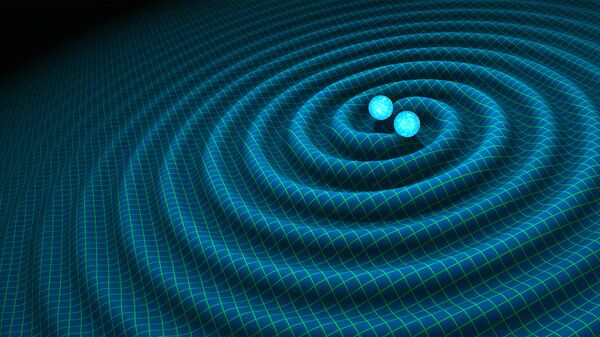The discovery was made by the Laser Interferometer Gravitational-Wave Observatory (LIGO), a joint project between MIT, Caltech and the National Science Foundation (NSF). The collaboration was done to discover and analyze gravitational waves.
Like the previous two detections, these gravitational waves resulted from two black holes slamming into one another billions of light years away. When black holes merge, they pull at one another with their unthinkably powerful gravity. This causes both of them to spin rapidly, releasing tremendous amounts of energy just before the merger.
Interestingly, all three of LIGO's observations were from different types of black holes. The original detection was of the merger of two massive black holes, the second of two stellar black holes (the smallest kind, of a similar scale to our sun). This third detection was of a pair of "intermediate" black holes 19 to 31 times the size of the sun.
"There's a famous saying: once is chance, twice is coincidence, and thrice is a pattern," said Bangalore Sathyaprakash, the study lead and a physicist at Penn State and Cardiff University, to The Verge. "We are seeing a pattern now."
While theoretically anything moving through space should generate gravitational waves, we're only likely to detect them when they result from massive objects because the waves produced by small objects (like you and me) are inconsequential. They are a consequence of general relativity, which stipulates that spacetime is curved by things such as mass and movement. Albert Einstein predicted the existence of gravitational waves in 1916, and a full century later LIGO confirmed their existence for the first time.
Sathyaprakash believes that these gravitational wave detections may be a key clue into the composition of our universe. Stars formed in the early universe look very different from the ones that form today: early stars were light, made entirely out of hydrogen and helium as those were the first elements to form. Younger stars are more likely to contain heavier elements like carbon and nitrogen, which formed later. Heavy stars make for smaller black holes in general, and light stars make for larger ones.
Heavy star black holes would also be the most likely type for LIGO to detect. But if that's the case, that means that it's possible for heavy stars to create large black holes – which flies in the face of existing astronomical theory.
"There are some people who did think heavier black holes could form, but they were in a minority," said Sathyaprakash. "So the past detection of black holes by LIGO was a turning point in astrophysics."
"It's only three detections so far, so it's only the beginning. But with this detection we are sending a message to the world that we are here to do gravitational wave astronomy."




